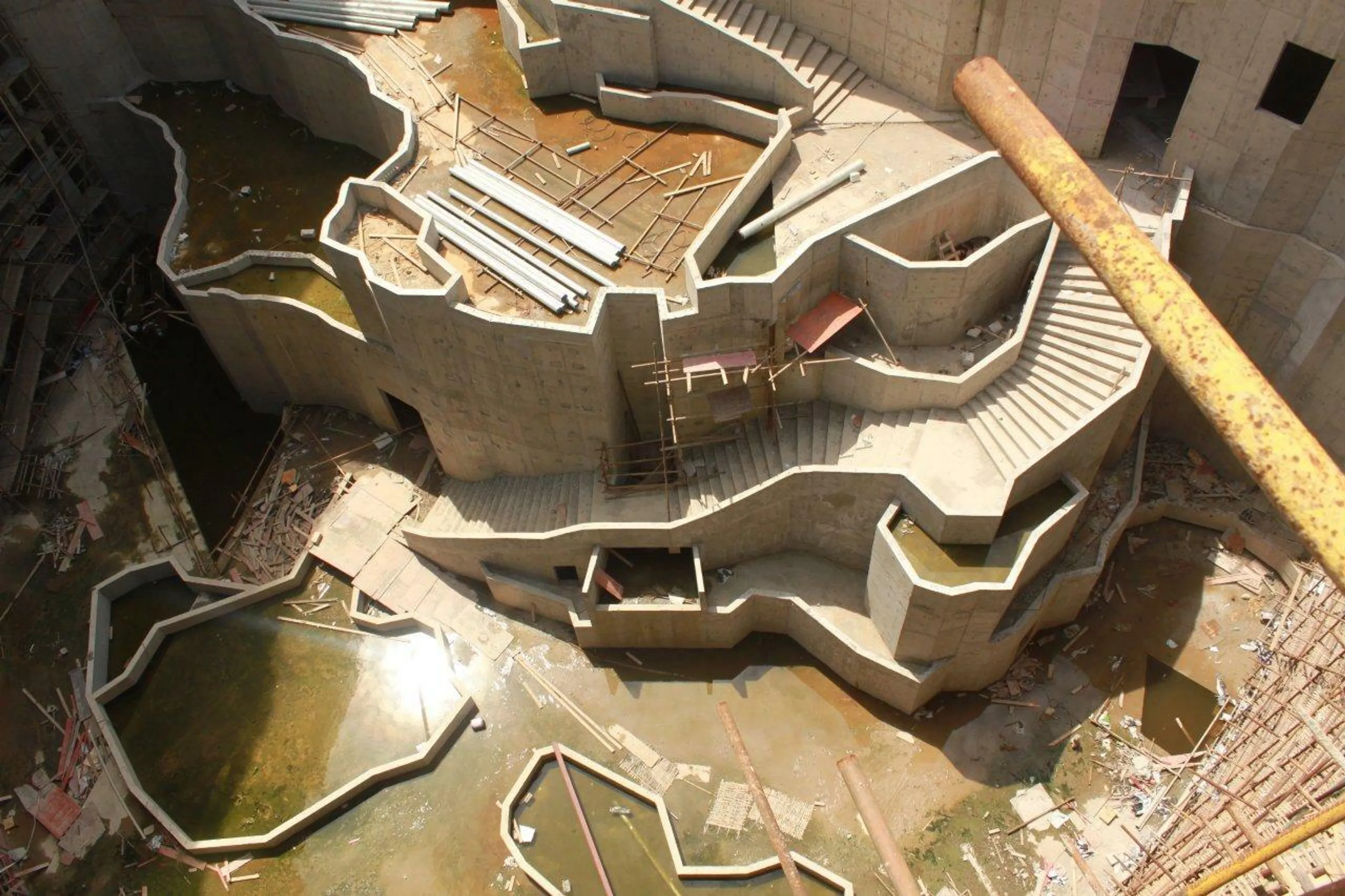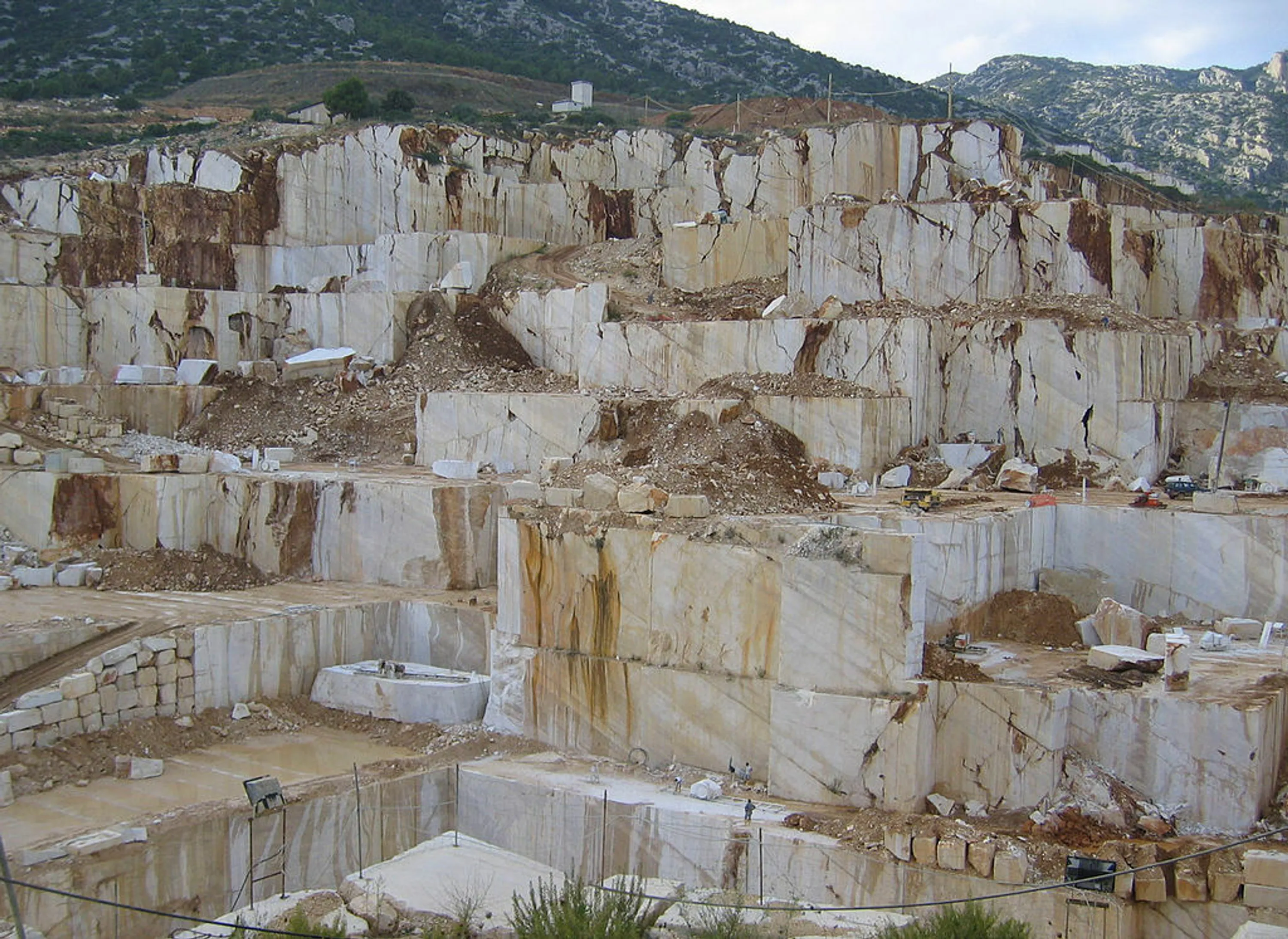Our work involved the design of the ‘primordial forest and waterfall,’ which is nestled in the heart of the building’s nautilus shape. It is one of several areas designed as both a learning experience and social space. The design for this area highlights the power of water as it pours down a 52 foot high landform that people can walk up using pathways that cross over the waterfall.
The waterfall reminds visitors of the central importance of water to the viability of all life. It is visible from inside much of the museum. Like the mountainous regions that inspired it, the waterfall area is extremely steep, creating design challenges when figuring out how water would flow into the waterfall, how pathways would interact with the water, and how the rock face would be expressed.
Like the building’s nautilus shape and the ‘cell wall’ along its interior, the waterfall and forest are an abstraction of forms found in nature. Its landform draws on qualities of the natural Chinese landscape near Shanghai and on stylized representations of landscape in traditional art forms, including painting and garden design:
Throughout the project, the design team was interested in expressing humans’ imprint on nature. Although the waterfall landscape is inspired by natural and cultural sources, the final design abstracts them instead of repeating them. Below is a construction photo of what the landform beneath the waterfall looks like at the moment, long before the rock facing and planting are installed. In its bare form, it’s easy to see the influence of a familiar human-made landscape: rock quarries.



